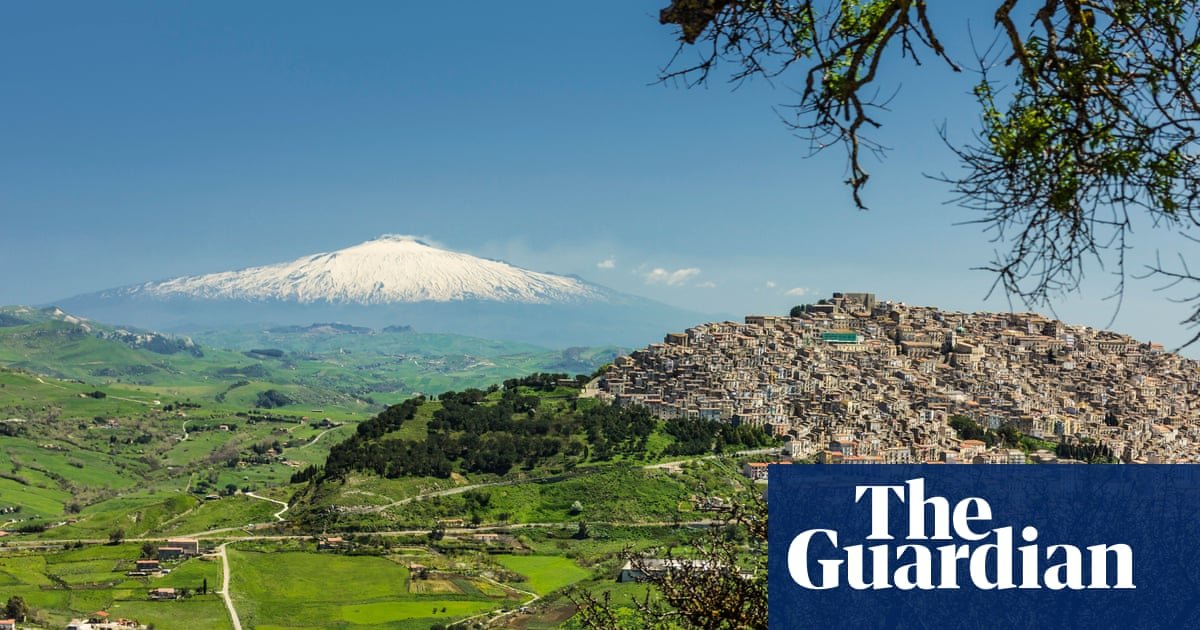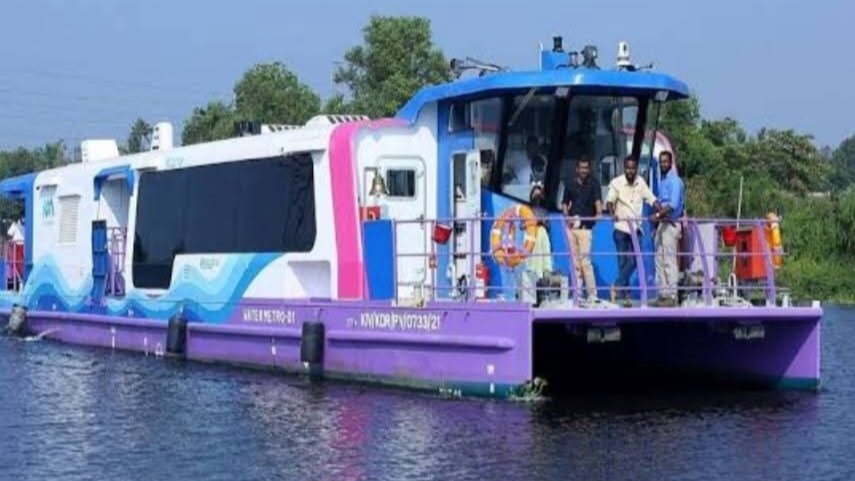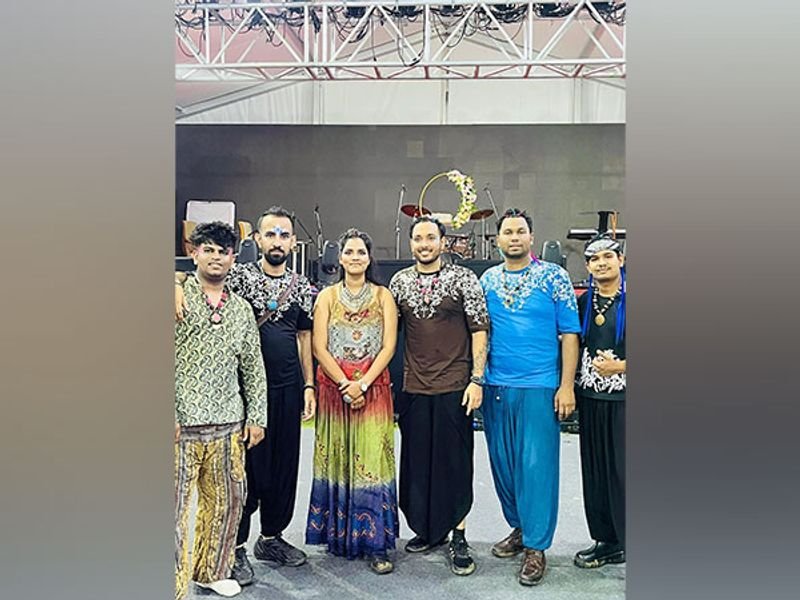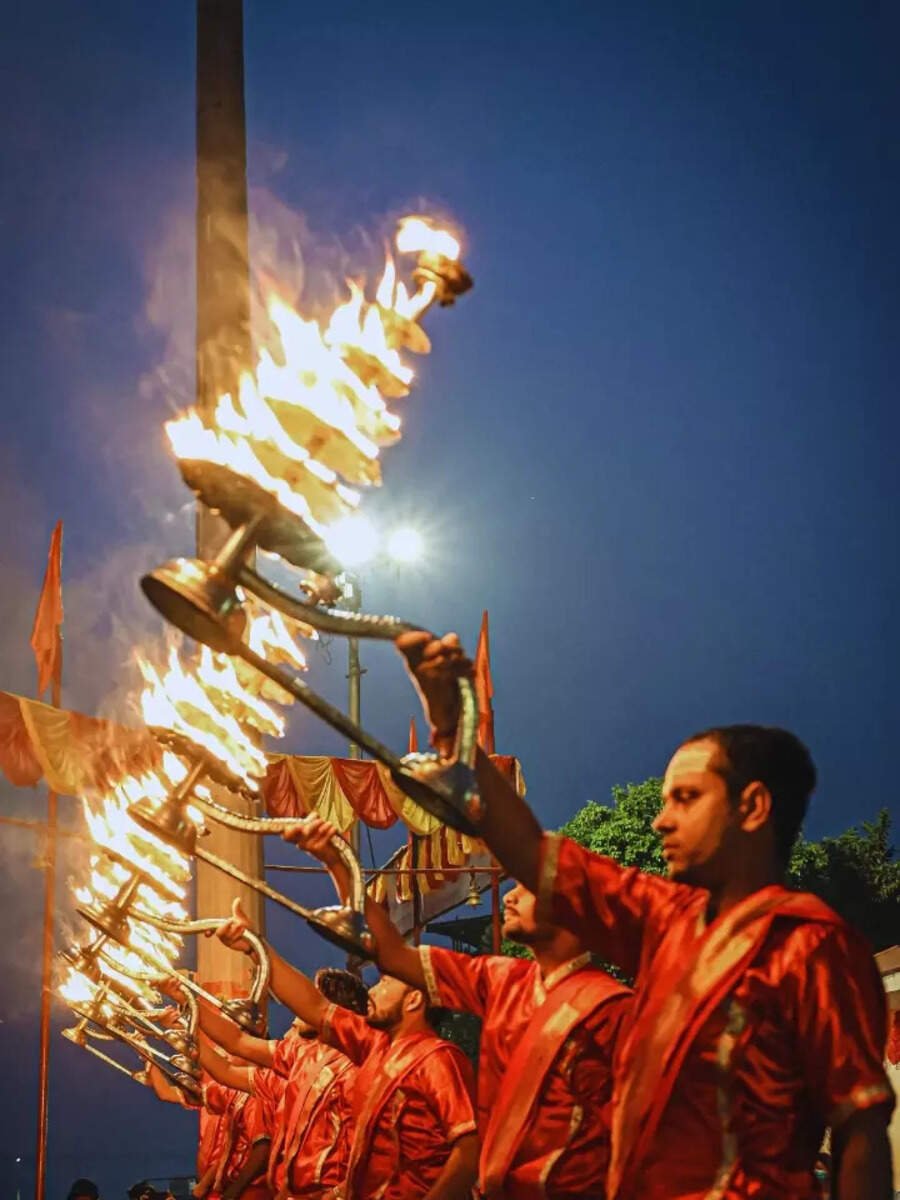Spiritual Travel
Walking in solitude and sunshine in Sicily: a newly restored pilgrim’s trail | Sicily holidays

Despite walking for three days, we’ve seen no one. Not a single hiker, dog walker or shepherd. Instead, golden eagles have circled lazily overhead, stags have boldly held our gaze, and rare blue butterflies have flitted around our booted feet. The silence here is deep and dense, broken only by birdsong.
This is the Madonie national park, also known as the Sicilian Alps, home to many of the island’s highest mountains and rarest plants. It’s a landscape of 200 million-year-old rocks, rich in fossils. Of raptors and the tiniest of songbirds. Of wild boar, fallow deer and porcupines. Of cyclamen and crocuses. Of the largest holly trees on the planet, and of 65 varieties of orchid. A landscape that is void of tourists, ramblers and Sicilians. For anyone in search of wilderness, solitude and sunshine, I can’t think of a better place.
Summer here would be too hot to wander. Spring – when the lush green landscape is dotted with sweet peas and poppies, and villages come alive with religious festivals – and autumn, when we visit, with its pink prickly pears hanging from cacti and rutting stags, are the best times to explore.
The 40,000 hectare park was created in 1989, when its biodiversity and geological rarity were recognised by Unesco as possibly the richest in the Mediterranean. My partner and I are here to walk from its hinterland to its rim on the northern coast of Sicily, not far from the capital, Palermo. Our route follows a section of the newly restored 166km Via dei Frati (The Way of the Friars), a trail once used by itinerant friars, pilgrims, beggars, mystics and missionaries. We shall be walking about 90km of sharp ascents and descents over seven days, starting from the village of Gangi (with views of Etna on a clear day). And yes, a century back, some of the Madonie’s medieval hilltop-perching villages were infamous mafia strongholds – all of which makes for a landscape as rich in history as it is in flora and fauna. Today, these villages – depopulated, dusty, replete with romantically ruined castles-on-crags and ridiculously ornate churches – are where we sleep.
We booked our guesthouses – in Petralia Sottana, Gangi, Geraci Siculo, Castelbuono and Cefalù – in advance, but could have saved ourselves the effort as we were the only guests. Each day, we head out on quiet country lanes that gradually turn into cattle tracks and then into hidden, winding paths. Here, we must keep a careful eye on the yellow arrows and red-and-white stripes, daubed on rocks and trees, that indicate the Via dei Frati. As we climb, we leave behind the horned cattle, shaggy goats and timid ponies that roam the Madonie’s verdant pastures. Now, skittish deer and their fawns clatter over the scree that often replaces grassland. Raptors soar. We dip and dive, through steep beech forests, past monumental oak trees rumoured to be a thousand years old, around woodlands of wild pear, ash and juniper.
In these most remote locations, we often stumble across tiny deserted chapels – and wonder how they were built, and by whom. These were vital places of refuge for the friars who once followed these routes, seeking alms in exchange for work.
The Via dei Frati was rediscovered by a Sicilian psychotherapist called Santo Mazzarisi. After walking several well-known pilgrim routes and wondering why Sicily had no trail of its own, Mazzarisi began researching, and then restoring, this ancient path. In 2017, it opened to the public, starting at Caltanissetta in central Sicily and ending at Cefalù on the coast. In the past, pilgrims then crossed the sea from Messina before heading to Jerusalem, but today’s route has been designed as eight stages, each ending in a village where food, accommodation and, of course, a beautiful church can be found. For a true pilgrim experience, Mazzarisi suggests visiting during holy week – 13-20 April this year – when Caltanissetta hosts processions of life-size statues re-enacting the Resurrection.
We join the trail at Gangi because this is where it hits the Madonie mountains. The park contains none of the usual trappings of civilisation so, of necessity, we carry a daily picnic, prepared by our guesthouse, and eat our focaccia sandwiches on sun-warmed rocks. Having explored Gangi’s museum, which is chock-full of geological and archaeological treasures unearthed from the park, we walk 14km to Geraci Siculo. We are not walking at our normal pace – there’s too much to distract us. Instead, we pause regularly to note the birds (buzzards, firecrests, buntings, tits and yellow-feathered serins), to examine the curiously striated rocks that are everywhere, and to exclaim over the remarkably “biblical” scenery. We feel as though we’re inside a Renaissance painting: grazing goats, wooded valleys, divinely slanting light.
In Geraci Siculo, we are beckoned into a library by its wizened curator, who proceeds to unlock glass cabinets stacked with 15th-century religious manuscripts. We cannot understand what he is telling us, but the odour of dusty pews drifting from the pages adds to the peculiar sense of time travel.
We continue to hike, upwards, through clouds, to Petralia Sottana, where we spend an additional day climbing Monte San Salvatore, following the scuffed tracks of rootling boar, clambering over granite boulders, and getting pleasantly lost.
after newsletter promotion
From Petralia Sottana, we amble 16km to our next accommodation, an agriturismo called Azienda Bergi, just outside Castelbuono – arriving so exhausted we can barely muster the energy to eat the obligatory four courses of Sicilian cuisine: caponata, pasta with sardines, grilled lamb and gelato made from the sap of neighbouring ash trees and known locally as manna or “white gold”.
Apart from a stooped white-haired man foraging for fungi, we meet no one on our walk until the fifth day, on a sunny morning, near a car park with a cafe. We’re heading to the region’s world famous giant holly trees, 20 metres high and thick with scarlet berries, when we hear voices, dogs barking, cars reversing. The sound is such an affront to our ears we pick up our pace, almost running to return to the unpeopled wilderness we’ve fallen in love with. Minutes later, we are happily alone again until we reach Castelbuono. A taxi is planned to take us to Gibilmanna for the final 9km descent into Cefalù on the Tyrrhenian Sea. Although the route becomes increasingly urban, we are mollified by repeated glimpses of sparkling ocean and the knowledge that Cefalù has not only beaches but a Unesco-listed Norman cathedral among its many treasures.
In the past, we have hiked all over Europe, but – thanks to the strenuous ascents and silent nights – never have we slept so well. And never have we felt so deliciously solitary. If crowds are your thing, this park and the pilgrim route just won’t do. But if you like a landscape all to yourself, or a terrain so rich in geological history and so abundant with rare plants, insects and birds that you’re forced to walk at an unfamiliarly slow pace, the Via dei Frati will surpass all expectations.
Annabel travelled independently. For information on the route, visit laviadeifrati.it. Inntravel offers self-guided walks, while Esplora runs guided walks in the Madonie mountains. Annabel Abbs is the author of several books on walking, most recently The Walking Cure, published by Bloomsbury for £14.99 under the name Annabel Streets. To support the Guardian and Observer, order your copy for £13.49 from guardianbookshop.com
Spiritual Travel
Bilaspur Set to Transform into Himachal’s Ultimate Adventure and Spiritual Hub

Move over, Manali and Shimla! Bilaspur is gearing up to become the state’s next big tourism hotspot, blending adrenaline-pumping adventures with serene spiritual experiences. The district administration has rolled out ambitious plans to develop water, land, and aerial tourism, promising something for thrill-seekers, pilgrims, and nature lovers alike.
A Sky-High Attraction: The Glass Bridge
Imagine walking on a transparent bridge, suspended high above breathtaking landscapes—Bilaspur’s upcoming Glass Bridge at Bharari will do just that! Designed to rival global attractions, this engineering marvel will offer daredevils an unforgettable experience while giving tourists a reason to extend their stay. Officials confirm the blueprint is ready, and construction will kick off soon after final approvals.
Sailing Through Scenic Routes: The Water Metro
Pilgrims visiting Maa Naina Devi will soon have a faster, more scenic journey thanks to the proposed Water Metro, connecting Bhakra Ghat to Kosariya Ghat. This isn’t just about convenience—it’s about turning travel into an experience. Devotees and tourists can hop on boats, enjoy the tranquil waters, and even transport their vehicles via waterways.
Jet Skis, Kayaking & More: Water Sports at Nakrana
Bhakra Dam’s pristine waters are about to get a lot more exciting! The district is eyeing water sports like jet skiing, kayaking, and boating to attract adventure junkies. The best part? Pilgrims heading to Naina Devi can now add a splash of adventure to their spiritual trip.
Bharari – The New Stopover Destination
Strategically located near Shimla, Manali, and Dharamshala, Bharari will soon feature modern tourist hubs with food plazas, parking, rest areas, and info centers. No more cramped pit stops—just smooth, comfortable breaks for travelers.
Listening to Locals: Boaters Get a Voice
Deputy Commissioner Rahul Kumar made sure local boat operators were heard during inspections, promising quick fixes to their concerns. This people-first approach ensures tourism growth benefits everyone.
Bilaspur’s transformation isn’t just about flashy infrastructure—it’s about jobs for youth, better travel experiences, and putting this hidden gem on India’s tourism radar. With projects set to launch soon, the district is poised to become a must-visit for those seeking adventure, spirituality, and untouched natural beauty.
Spiritual Travel
Shiva Tribe Debuts in Gurgaon’s Tikli-Raiseena: IMPC’s Bold Step to Merge Spirituality, Rural Tourism, and Modern Family Wellness

VMPL
New Delhi [India], August 4: In the lush rural landscape of Tikli-Raiseena near Gurgaon, a new chapter in India’s spiritual and rural tourism ecosystem quietly unfolded. The International Mandir Prabandhak Committee (IMPC) launched its ambitious spiritual wellness initiative–Shiva Tribe–an experience-driven, immersive space designed to reconnect Gen Z and modern families with India’s timeless spiritual roots.
Set against the tranquil backdrop of Haryana’s Aravalli fringes, Shiva Tribe is more than a mandir–it is a curated journey of self-discovery, holistic wellness, and cultural revival, seamlessly merging ancient wisdom with modern aspirations. The inaugural three-day Pran Pratishtha Mahotsav was held in July, graced by spiritual luminaries including Pujya Shri Sudhanshu Ji Maharaj, Pujya Shri Dayanand Ji Maharaj, and dignitaries such as Haryana’s former Minister Shri Om Prakash Dhankar. Business leaders, rural development advocates, and spiritual patrons attended in significant numbers–signaling a rising interest in faith-based tourism models.
Spiritual Tourism: India’s Growing Wellness Sector
India’s spiritual tourism market is undergoing a silent revolution. According to the Ministry of Tourism, the wellness and spiritual tourism segment is projected to reach USD 30 billion by 2028, growing at a CAGR of over 10%. With over 330 million domestic religious tourists recorded annually and rising international interest in authentic Indian experiences, initiatives like Shiva Tribe have the potential to create high-value, low-impact tourism models in rural belts–generating employment, fostering entrepreneurship, and revitalizing local economies.
“In today’s fragmented lifestyle, families are searching for meaningful escapes–not just vacations. Shiva Tribe is that sacred pause–a place to reconnect, reflect, and realign, together,” said Dr. Preet Sandhuu, mentor of the project and a key voice in India’s contemporary spiritual movement.
A New Blueprint: Spirituality Meets Community Living
Unlike traditional spiritual centers, Shiva Tribe offers a complete spiritual-eco retreat–including weekend live devotional music by its in-house ‘Shiva Tribe Band’, yoga sessions, mantra-infused meditations, Vedic rituals, and stay facilities for families. It’s a full-circle experience designed to inspire urban youth and families alike to step into a more conscious, value-driven lifestyle.
“Here, spirituality is not a sermon–it’s an experience,” said Shri MP Singh, project visionary and founder of ShivaTribe. “We want to build a network of such community-driven centers across rural India, using temple heritage as a catalyst for rural rejuvenation and youth engagement.”
Rural Regeneration Through Faith
The Tikli model aligns with India’s rural tourism policy goals by transforming underexplored rural regions into mindful tourism destinations. With over 60% of India’s population residing in villages, initiatives like this leverage India’s spiritual capital to promote rural entrepreneurship, handicrafts, organic farming, and ecotourism–creating a sustainable rural economy rooted in culture and community.
IMPC’s Broader Mission
The International Mandir Prabandhak Committee (IMPC), known for initiatives like the Mahasangam Yatra, Trisul Yatra and Shiv-Shakti Kendras, is rapidly becoming a bridge between India’s ancient temple traditions and its digital future. Its work focuses on temple modernization, spiritual leadership development, and community revival–backed by collaborations with scholars, saints, and civic leaders.
By anchoring the Shiva Tribe initiative in Tikli, IMPC demonstrates how faith-based community models can attract tourism, foster economic inclusion, and support national goals like ‘Viksit Bharat’ and ‘Digital Bharat’.
Shared by
(ADVERTORIAL DISCLAIMER: The above press release has been provided by VMPL. ANI will not be responsible in any way for the content of the same)
(This content is sourced from a syndicated feed and is published as received. The Tribune assumes no responsibility or liability for its accuracy, completeness, or content.)
Spiritual Travel
10 oldest temple towns in India for spiritual getaways – The Times of India

10 oldest temple towns in India for spiritual getaways The Times of India
Source link
-

 Brand Stories2 weeks ago
Brand Stories2 weeks agoBloom Hotels: A Modern Vision of Hospitality Redefining Travel
-

 Brand Stories1 week ago
Brand Stories1 week agoCheQin.ai sets a new standard for hotel booking with its AI capabilities: empowering travellers to bargain, choose the best, and book with clarity.
-

 Destinations & Things To Do2 weeks ago
Destinations & Things To Do2 weeks agoUntouched Destinations: Stunning Hidden Gems You Must Visit
-

 Destinations & Things To Do1 week ago
Destinations & Things To Do1 week agoThis Hidden Beach in India Glows at Night-But Only in One Secret Season
-

 AI in Travel2 weeks ago
AI in Travel2 weeks agoAI Travel Revolution: Must-Have Guide to the Best Experience
-

 Brand Stories1 month ago
Brand Stories1 month agoVoice AI Startup ElevenLabs Plans to Add Hubs Around the World
-

 Brand Stories3 weeks ago
Brand Stories3 weeks agoHow Elon Musk’s rogue Grok chatbot became a cautionary AI tale
-

 Asia Travel Pulse1 month ago
Asia Travel Pulse1 month agoLooking For Adventure In Asia? Here Are 7 Epic Destinations You Need To Experience At Least Once – Zee News
-

 AI in Travel1 month ago
AI in Travel1 month ago‘Will AI take my job?’ A trip to a Beijing fortune-telling bar to see what lies ahead | China
-

 Brand Stories2 weeks ago
Brand Stories2 weeks agoContactless Hospitality: Why Remote Management Technology Is Key to Seamless Guest Experiences
